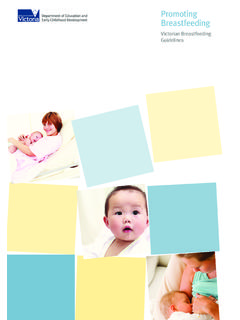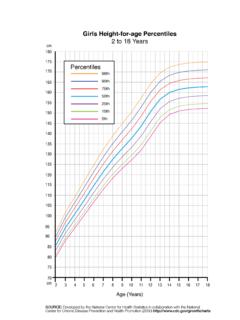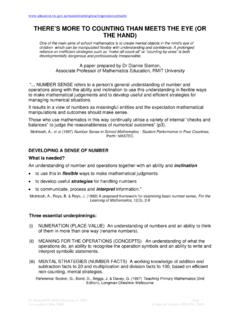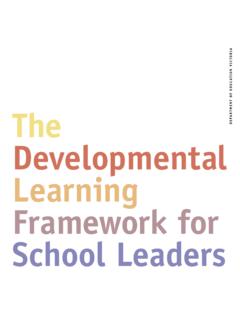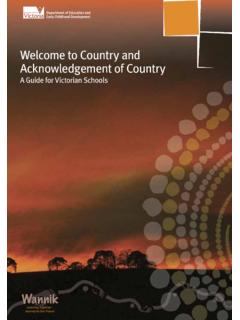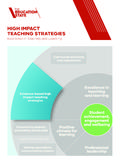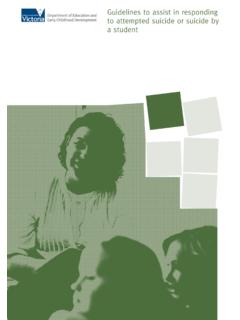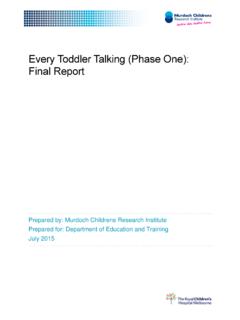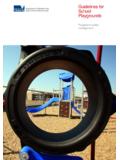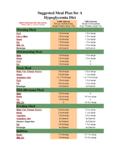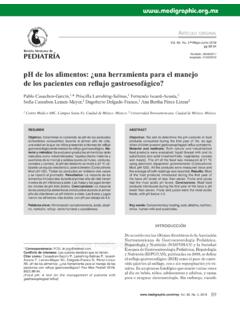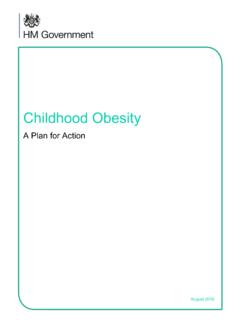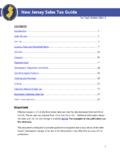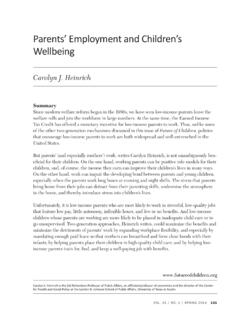Transcription of Promoting Breastfeeding - Department of Education and …
1 Promoting Breastfeeding Victorian Breastfeeding Guidelines Published by the Department of Education and Early Childhood Development Melbourne June 2014. State of Victoria ( Department of Education and Early Childhood Development) 2014. The copyright in this document is owned by the State of Victoria ( Department of Education and Early Childhood Development), or in the case of some materials, by third parties (third party materials). No part may be reproduced by any process except in accordance with the provisions of the Copyright Act 1968, the National Education Access Licence for Schools (NEALS) (see below) or with permission.
2 An educational institution situated in Australia which is not conducted for profit, or a body responsible for administering such an institution may copy and communicate the materials, other than third party materials, for the educational purposes of the institution. Authorised by the Department of Education and Early Childhood Development 2 Treasury Place, East Melbourne, Victoria, 3002. ISBN 978-0-7594-0771-8. This document is also available on the internet at professionals/health/ Acknowledgements The Victorian Breastfeeding Guidelines have been developed by the Royal Women's Hospital in collaboration with the Judith Lumley Centre at La Trobe University, the Department of Education and Early Childhood Development and the Department of Health.
3 An Advisory Panel consisting of community- and hospital-based maternal and child health professionals and community members provided feedback to make the Guidelines' content, structure and style appropriate for clinicians in all settings. This is a substantial update of the 1998 Victorian Breastfeeding Guidelines, which were originally based on the Royal Women's Hospital Breastfeeding Protocol. We would like to thank everyone who attended the Public Forum in July 2011. Special thanks to the Advisory Panel for their valuable input and to the many others who made suggestions and contributions to the revised Victorian Breastfeeding Guidelines.
4 Anita Moorhead and Associate Professor Lisa Amir would like to recognise the written contributions of Judith Russell, Ruth Berkowitz and Fiona McLardie-Hore. Thanks also to Mary Caruana, Jennifer Halliday and Manjri Raval. Recognition is also given to: Anna Burdett Midwife Elizabeth Gasparini Department of Nutrition and Dietetics, Royal Women's Hospital Theresa Lynch Women's Alcohol and Drug Service, Royal Women's Hospital Dr Cath Wilkins (S/Sgt) Victoria Police 1 Introduction 1. Contents Background 1.
5 Purpose 1. Breastfeeding and health 2. The importance of Breastfeeding 3. Baby Friendly Health Initiative and the International Code of Marketing of Breastmilk substitutes (The WHO Code) 4. How Breastfeeding works 6. breast anatomy 6. Hormonal (endocrine) control of lactation 7. Autocrine control of lactation 8. breast storage 8. 2 Breastfeeding advice during pregnancy 9. Baby Friendly Health Initiative antenatal Education and discussion 9. Referral for additional support during pregnancy 10. Antenatal breastmilk expression 10.
6 Considering Breastfeeding in specific circumstances 11. 3 Establishing Breastfeeding 12. Skin-to-skin contact 12. The first breastfeed 13. The natural pattern of Breastfeeding 14. Exclusive Breastfeeding 17. Positioning and attachment at the breast 17. Where the infant sleeps 20. Rooming in 20. Bed-sharing and co-sleeping 21. Monitoring the infant's progress 21. 4 Routine Breastfeeding assessment 24. History and examination 24. History 24. Examination 25. Nipple issues 26. Nipple variations 26. Nipple pain and trauma 27.
7 Other nipple problems 29. Nipple shields 30. Blood in the breastmilk 32. breast issues 33. Full breasts and engorgement 33. Blocked milk ducts 34. White spot/nipple bleb 35. Galactocele 35. Mastitis 35. breast abscess 39. breast and nipple thrush 39. breast surgery and Breastfeeding 41. milk supply issues 42. Low milk supply 42. Breastmilk oversupply 45. Suppression of lactation 46. Relactation/induced lactation 47. Maternal illness and Breastfeeding 48. Infant-related Breastfeeding issues 50. Hypoglycaemia and the Breastfeeding infant 50.
8 The sleepy infant 50. Breastfeeding and jaundice 51. The unsettled infant 52. breast refusal and the non-attaching infant 54. Breastfeeding multiples 55. Preterm infants 56. Infants with conditions affecting Breastfeeding 58. Slow weight gain 60. 5 Alternative methods of infant feeding when Breastfeeding is not possible 63. Expressing breastmilk 63. Storage of expressed breastmilk (EBM) 67. Alternative feeding methods 69. Indications, preparation and use of infant formula 71. Breastmilk banks in Victoria 74.
9 6 Continuing Breastfeeding 75. Medicines and Breastfeeding 75. Drug and alcohol use and Breastfeeding 75. Sexuality, contraception and Breastfeeding 76. Sexuality 76. Contraception 77. Dietary advice 77. Working and Breastfeeding 79. Breastfeeding during pregnancy and tandem Breastfeeding (feeding an infant and an older child) 80. Breastfeeding while introducing solids 81. Appendix 1 82. Acceptable medical reasons for use of breast - milk substitutes 82. References 86. Resources 98. Websites about pregnancy and parenting 99.
10 Community support and information services 100. Victorian Breastfeeding Guidelines for health professionals Breastfeeding is the biological way of providing infants and young children with the nutrients required for optimum growth and development. Australian and international guidelines recommend that infants be exclusively breastfed until around six months of age, and that mothers continue Breastfeeding with the addition of appropriate complementary foods for up to two years or beyond. Victorian women receive perinatal care from a range of health professionals that include midwives, general practitioners, nurses, obstetricians, paediatricians, and maternal and child health nurses.
